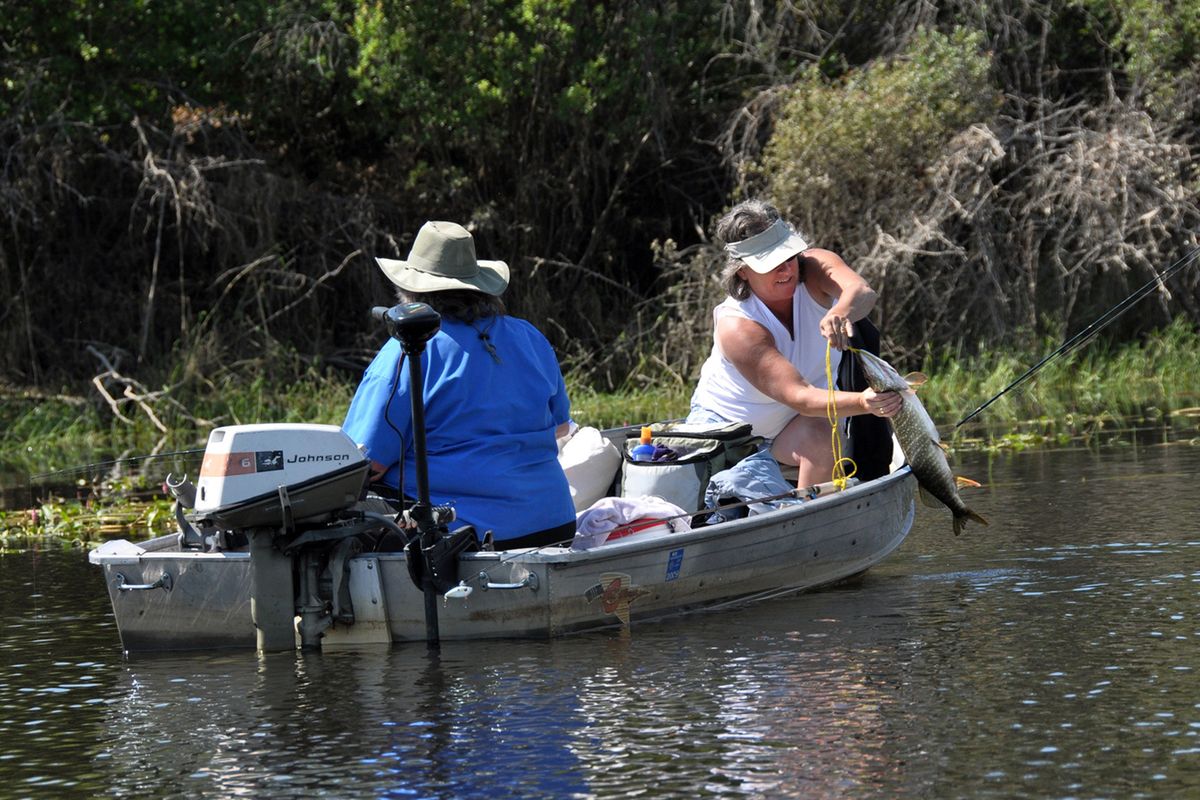Bounty on the rise for pike
Rules making it easier to reel in toothy predator

Spoons, spinners, hooks, flies, baits and bobbers of all sizes hang like Christmas decorations in a window of the Kalispel Tribe’s fisheries office.
“Every one of those lures has come out of northern pike we’ve handled in our research,” said biologist Jason Olson. “The variety of sizes and colors tell you pike will hit just about anything.”
That’s the good news pike-oriented anglers can take to the Pend Oreille River – or numerous other pike fisheries in the region.
The toothy predators, illegally introduced to western Montana and North Idaho decades ago, have boomed in the past decade in the Pend Oreille River downstream from Newport.
As state and tribal fisheries managers thin the pike with nets to help stop their advancement downstream into the Columbia River, they’re also encouraging anglers to catch and keep pike.
“When we started doing tagging surveys years ago, we used hook and line to catch pike,” Olson said, noting that the researchers later advanced to electro-shocking and even gillnets.
“We caught our first pike on this,” he said, holding a 1-ounce chartreuse spoon with a pair of red beads for eyes. “Since then, we’ve caught them on soft baits, with spinners, plugs and all sorts of lures, bigger and smaller.
“If I had to pick just one, it would be a spoon. It covers a lot of water and works well on the retrieve. Spoons can be even deadlier when you let them flutter down.”
Other anglers have different opinions, of course. That’s what makes the world turn. It’s not uncommon to see an angler with a beefy rod casting a foot-long plug or soft bait.
Washington paved the way for a deadly pike combo this year by adding the Pend Oreille River to waters where two poles can be used. The new rule takes effect on May 1. Cost of the necessary two-pole endorsement has been reduced to $14.30.
From shore or anchored in a boat, anglers could cast a slip-bobber rig and soak a herring bait – or even a perch (these baits must be dead to be legal). Then use a second rod to cast a spoon, plug, topwater lure or soft bait.
Rigging a swimbait weedless – with the hook point embedded in the body, works well fished through weeds, Olson said.
“Spinner baits work well, too, but I avoid them because they’re expensive and pike trash them.”
Olson likes to fish the sloughs in Box Canyon Reservoir during spring as the water warms faster than in the main river and lures pike into shallows.
By July, many of the adult pike head out of the sloughs and disperse. Some stay near the mouths of sloughs while most hang out in and around weed beds in the main river during summer.